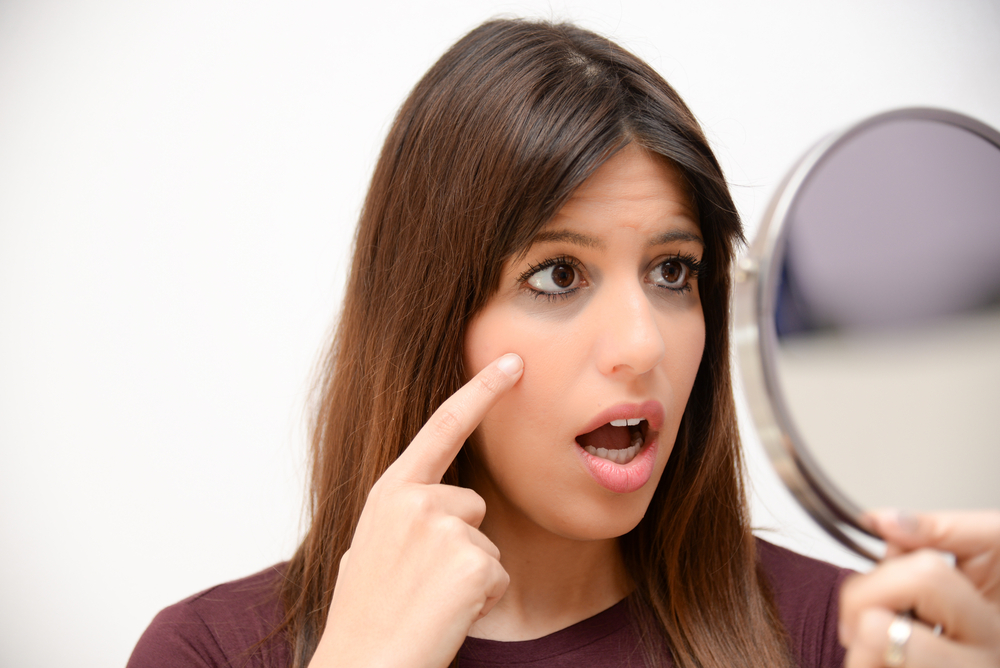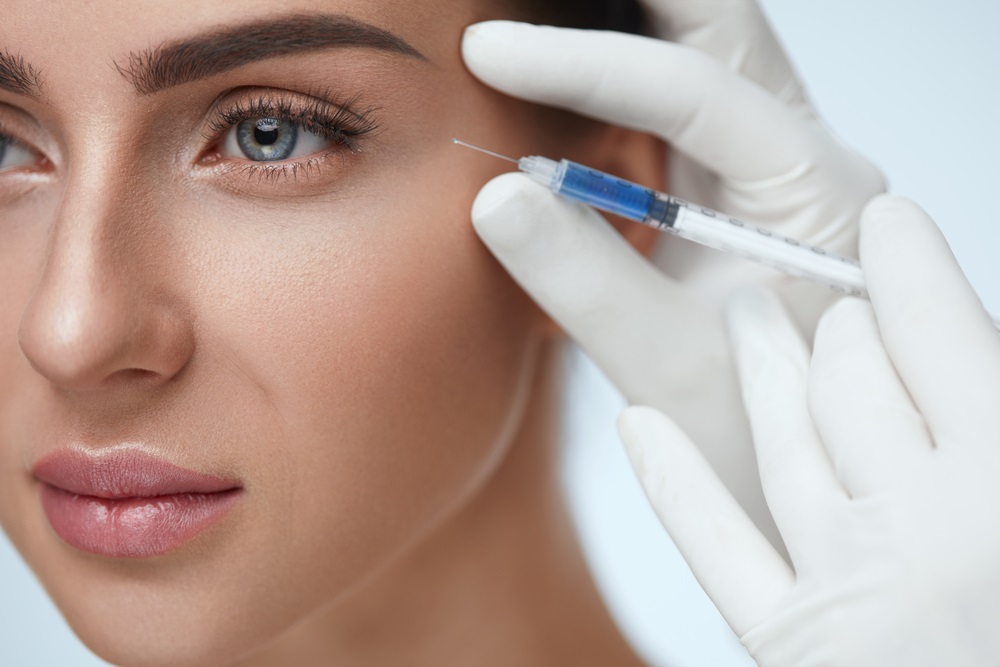Sadly, the eyes are often the first to go. Over time, there’s an almost imperceptible hollowing. It happens slowly at first — but all at once, you notice. Perhaps you can’t pinpoint the cause, but one day you think “Wow. I look tired.”
Hollowing of the eyes is caused by the inevitable downward trajectory of the face. As we age, fat in the cheek slides down the bones of the face (which are also thinning). “We see this change early because beginning in our 20s we start to lose fat and collagen, and the face starts to drop, which creates this little concavity under the eye,” says Dr. Michelle Henry, a New York City dermatologist.
To make matters worse, the skin thins out and blood vessels become more visible as we lose the support structures under the eye. Another type of darkness can result too — a shadow caused by the area’s hollow shape.
What Causes Dark Circles
Patients may be focused on that darkness and want to treat it, seeing it as a separate issue from hollowing. And sometimes that theory pans out.
“Some people may have excess pigmentation under the eyes which we can treat with certain kinds of peels, like the Enerpeel Eye and Lip Peel by Glytone,” says Dr. Henry. The peel is a gentle combination of lactic and trichloroacetic acids that doesn’t injure the delicate skin under the eyes. When a series of mild chemical peels is done weekly, dark circles brighten significantly. But not all darkness is the same. If it’s created by hollowing and shadows, filler or maybe a combination of both treatments is best, she suggests.
The technique used to correct hollowing employs tear trough filler. The tear trough begins at the inner corner of eye and ends at the middle of the under eye. Hyaluronic acid is injected deep in the area to plump it. Dr. Julie Russak, board-certified dermatologist and founder of the Russak Dermatology Clinic in Manhattan, suggests a simple test to figure out if you’re a good candidate for the procedure. Look into a mirror. “Pull the tip of your nose to the side and look at the opposite eye. If a hollow line appears there, you’re a good candidate,” she says.
Finding a Doctor You Can Trust
As is always the case with fillers, going to the right doctor is key. Success is all about technique. “Ask them how many patients they’ve treated. Only a board-certified dermatologist, plastic surgeon or ocular plastic surgeon should be making injections to this area,” says Dr. Henry.
“Your doctor has to be someone who really understands fillers and understands the anatomy of the face. Talk to them about how they treat complications. If they can’t treat complications you shouldn’t do this procedure. Someone who does surgeries — we really understand the anatomy of the face — will keep you safer than someone who regularly does, say, pap smears,” she warns.
Often, doctors who do not specialize in cosmetic procedures will perform injectable treatments because this offers them an additional source of income. Except someone who’s filling the under eye needs to have enough experience to know which types of filler should be used — more viscous hyaluronic acid fillers like Restylane, for example, versus thinner versions like Belotero — and where they should be placed.
Dr. Jeannette Graf, a dermatologist and assistant clinical professor of dermatology at Mount Sinai Medical Center, approaches the procedure meticulously. She takes pictures of her patients from about a half dozen angles. The photos can be unflattering and tough to look at, but are necessary as they depict problem areas. Asymmetries, volume loss, wrinkling, sliding — it’s all exposed by raw iPad images. “People will look at themselves in the mirror differently than I see them. So I show them where their issues are so they can understand how I plan to correct the problems they’re perceiving,” says Dr. Graf.
The Solution: Injectable Fillers
Most of the problem, she says, occurs in the mid-face — from the mid-eye down to the upper lip. Because volume loss in the cheeks can also impact the look of the eyes, Dr. Graf looks to that area to see if it needs to be restored in any way. It may sound counter-intuitive to start with anything other than the under eyes, but volume loss in the face has many effects.
To prove it here’s another little test: while looking in the mirror, pinch your outer cheeks (toward the temple) with all five fingers to lift them up a bit. When you do, you might notice under eye shadows lightening a bit. The added lift in the cheeks makes the under-eye hollow less deep. Filler in the upper cheeks mirrors that effect in a natural way.
“I like to address the cheek first, sometimes that can make the under eyes look better,” says Dr. Graf. “Most people do have a cheek issue. I check to see if there’s a flattening of the cheek while looking from a three-quarters profile. If so, I’ll do some correction there and it will help the tear trough. But very often patients will need both areas filled.”
When doctors fill the cheek they typically do so with a thicker filler that creates volume, like Voluma or Restylane. They place it close to the bone so the result is a natural lifting of the facial tissue.
The technique for filling the tear trough is similar in that the hyaluronic acid is generally placed on top of the bone. “It goes pretty deep — on the bone. It’s a much safer place to put the filler because we don’t have as many capillaries there,” says Dr. Russak. “We fill the space that is anatomically called the tear trough. Once you put the filler on top of the bone, you can use a Q-tip and roll it in there. You can see it going into the channel and filling it in.” Doctors use a a thin tube called a cannula to place the filler. It’s flexible so it doesn’t damage surrounding tissue as much as a regular needle. Patients are less likely to bruise.
Instant Results
The procedure is instantly gratifying. The eyes and face seem brighter and more awake because the filler reduces under-eye hollowing. It isn’t cheap, though. The procedure typically costs around $800, depending on how much filler is used. And because hyaluronic acid — the substance fillers are made of — is naturally occurring in the body, the filler effect is not permanent. The body eventually metabolizes the product.
But there are two points of good news. First, unlike other areas of the face that are more mobile and where filler only lasts about nine months, filler in the tear trough lasts closer to one year. Also, placing hyaluronic acid inside the skin stimulates collagen production. So you may end up with some added, long-lasting benefits. Because of this effect, it’s great to start filling early.
“I’ve done tear troughs on 22-year-old brides, who need it genetically. But what I’m finding is that many more Millenials, because of info and social media, are communicating with each other about the procedures they’ve had done. We start losing collagen in our 20s, so your late 20s or early-to-mid 30s is the perfect time to start,” says Dr. Graf.









